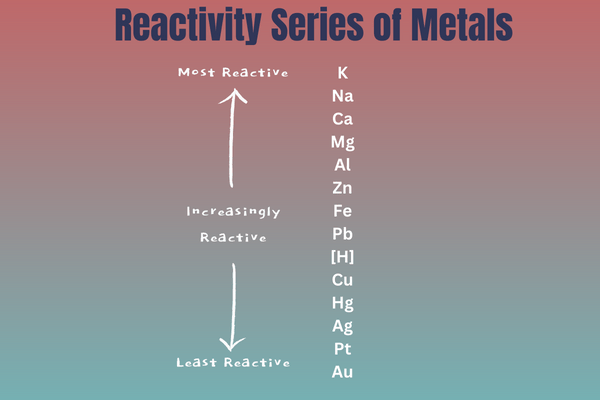Mahatma Gandhi, the father of the Indian nation, led numerous movements against British colonial rule using the principles of truth (Satya) and non-violence (Ahimsa). Among all his campaigns, the Civil Disobedience Movement, launched in 1930, holds a special place in India’s freedom struggle. A symbolic yet powerful act that initiated this movement was Gandhiji’s decision to break the Salt Law by leading the famous Dandi March.
On March 12, 1930, Gandhiji, accompanied by 78 of his followers, marched 240 miles from Sabarmati Ashram to Dandi, a coastal village in Gujarat. On April 6, 1930, he picked up a handful of salt from the seashore, thus openly defying the British-imposed Salt Law. This simple act of defiance became a symbol of resistance against British oppression and united Indians from all walks of life in the struggle for independence.
But why did Gandhiji choose the Salt Law as the starting point for the Civil Disobedience Movement? What made salt, an ordinary commodity, such a powerful symbol of Indian resistance? Let’s explore the key reasons behind Gandhiji’s decision and understand the significance of this iconic moment in India’s freedom movement.
1. Salt: A Universal Commodity Affecting Every Indian
Salt was a basic necessity in every Indian household, consumed by rich and poor alike.
- The British government imposed a heavy tax on salt, making it expensive and unaffordable for the poorest sections of society.
- Indians were forbidden from making their own salt, even though salt was freely available along India’s coastline.
- By choosing salt, Gandhiji picked an issue that affected all Indians, irrespective of class, caste, or religion.
- The protest against the Salt Law thus became a mass movement, uniting millions of Indians in a common cause.
Gandhiji’s decision to break the Salt Law was strategic—it directly touched the lives of every Indian, making the freedom struggle relatable and personal.
2. Symbol of British Economic Exploitation
The Salt Law was more than just a taxation policy; it was a symbol of British economic exploitation.
- The British monopoly on salt production and distribution reflected how they controlled essential resources for profit.
- Indians were forced to buy salt from the British government at high prices, which led to economic hardship, especially among the poor.
- Gandhiji believed that by challenging the Salt Law, he was challenging the entire economic structure of British colonialism.
- This act exposed the unjust nature of British rule, making it clear that the colonial government cared more about profit than the welfare of the people.
Thus, breaking the Salt Law became a symbolic blow to the British economic machinery, highlighting the need for self-rule (Swaraj).
3. A Non-Violent Method with Profound Impact
Gandhiji’s philosophy of non-violence (Ahimsa) was at the heart of all his movements.
- Breaking the Salt Law was a peaceful and non-violent act that required no violence or bloodshed.
- It allowed millions of ordinary Indians to participate in the freedom movement through simple acts like making salt, boycotting British goods, and refusing to pay taxes.
- The Salt March became a model for non-violent protest, showing that defying unjust laws peacefully could be a powerful weapon against colonial rule.
By choosing salt, Gandhiji demonstrated that non-violent disobedience of even the smallest law could have a profound political impact.
4. Drawing International Attention to India’s Struggle
The Dandi March and the Salt Satyagraha gained international recognition, drawing the world’s attention to India’s demand for independence.
- The symbolism of salt—a humble commodity—caught the imagination of the global media.
- Newspapers around the world reported the march, highlighting the injustices of British colonial rule.
- The images of Gandhiji, an elderly man walking barefoot for 240 miles, inspired global admiration and support for India’s cause.
Thus, Gandhiji’s decision to break the Salt Law had not only a domestic impact but also a global influence, putting pressure on the British government.
5. Simplicity That Empowered the Masses
One of the genius aspects of Gandhiji’s strategy was the simplicity of the Salt Satyagraha.
- Anyone, regardless of their age, gender, or economic status, could make salt and participate in the movement.
- The act of making salt became a symbol of defiance, allowing ordinary Indians to feel empowered and connected to the freedom struggle.
- This mass participation transformed the struggle for independence from being an elite movement to a people’s movement.
Gandhiji’s choice of salt thus democratized the freedom struggle, giving every Indian a role to play.
6. Breaking the Salt Law as a First Step in a Larger Movement
Gandhiji’s choice to break the Salt Law was also strategic in terms of timing and impact.
- The Salt Satyagraha was intended to be the first step in a broader Civil Disobedience Movement, which included:
- Boycott of British goods.
- Refusal to pay taxes.
- Non-payment of land revenue.
- Breaking other colonial laws.
- By starting with salt, Gandhiji ensured that the movement would build momentum, gradually challenging the very foundations of British rule.
The Salt Law was thus the spark that ignited a nationwide struggle, involving millions of Indians.
7. Psychological Defiance: Breaking the Aura of British Authority
Gandhiji’s decision to break the Salt Law was also a psychological strategy.
- The British Empire thrived on the myth of invincibility—the belief that their laws could not be challenged.
- By defying the Salt Law, a seemingly minor regulation, Gandhiji shattered this myth, proving that the British were not invincible.
- This act of civil disobedience gave Indians the confidence to resist colonial rule in other spheres as well.
Thus, breaking the Salt Law became a symbolic act of self-empowerment, inspiring confidence and unity among the Indian masses.
Conclusion
Mahatma Gandhi chose to break the Salt Law because:
- Salt was a basic necessity, making the issue relevant to all Indians, rich or poor.
- The Salt Tax symbolized British economic exploitation, making it a powerful symbol of colonial oppression.
- The simplicity of the act allowed mass participation, turning the freedom struggle into a people’s movement.
- It was a non-violent method that aligned with Gandhiji’s philosophy of Ahimsa.
- The Salt Satyagraha drew international attention, exposing the injustices of British rule.
- It psychologically broke the myth of British invincibility, inspiring confidence among Indians.
- The act served as a gateway to a broader Civil Disobedience Movement, challenging the entire structure of colonial rule.
The Salt March and the breaking of the Salt Law became defining moments in India’s freedom struggle, proving that even a simple act, rooted in truth and non-violence, could shake the foundations of an empire. Gandhiji’s genius lay in turning the ordinary into the extraordinary, making salt not just a commodity but a symbol of India’s determination to be free.

Rahul Kumar is a passionate educator, writer, and subject matter expert in the field of education and professional development. As an author on CoursesXpert, Rahul Kumar’s articles cover a wide range of topics, from various courses, educational and career guidance.



